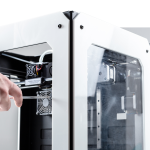IoT integration is a ‘sweet spot’ for blockchain technology

The integration of IoT and Blockchain networks is a “sweet spot” for digital transformation, according to a new report from Gartner.
But while that integration is taking place at a “faster pace than expected”, it could be a decade before the full potential is realized.
According to the analysis, IoT Adopters Embrace Blockchain, based on a survey of IT heads from 500 US companies, 75 percent of IoT technology adopters have already adopted blockchain or are planning to by the end of 2020.
Writing for Forbes, enterprise tech authority Bernard Marr described the potential of marrying IoT and blockchain technology as “something even greater than the sum of its (not insignificant) parts.”
As work environments across industries— whether an office, shopping mall, shipping container, quarry, or otherwise— become inundated with “always-online, data-gathering devices”, blockchain can enable an encrypted, tamper-proof method of transferring, sorting and holding data.
“Put them together and in theory, you have a verifiable, secure and permanent method of recording data processed by “smart” machines in the IoT,” said Marr.
That potential is seeing 86 percent of blockchain adopters implementing the two technologies together in various projects, according to Gartner’s Vice President and report author Avivah Litan in what she called a “sweet spot” for blockchain technology.
Overall, the majority of respondents (63 percent) said the top benefit of this combined tech lead to increases in security and trust in transactions shared between multiple parties.
Business efficiency and lower costs were motivations for 53 percent, while higher revenues and increased business opportunities (43 percent) and improved user experience (37 percent) were lower down the rung.
A key example of this in practice is within the supply chain where a shipping container might include IoT sensors that can monitor and record conditions such as temperature, humidity and even handling, such as vibration or tampering, in real-time.
That can ensure produce— organic beef from Argentina, for example— has been shipped in conditions that have safeguarded integrity and quality— and, if not, the point in which the event occurred can be securely tracked and accounted for.
YOU MIGHT LIKE

Is blockchain 3D printing’s guardian angel?
Food-tracking, in particular, is a key area of investment for blockchain, owed to the technology’s potential in making complex supply chains traceable from start to finish, and negating the need for paperwork that’s easily compromised or lost.
Walmart has deployed blockchain technology to track the provenance of leafy greens— following bacterial outbreaks— in a coalition featuring Unilever and Nestle, while French supermarket giant Carrefour claims to be seeing boosted profits and increasing consumer trust, using the technology to track meat, milk, and fruit from farms to stores.
As one of the biggest blockchain innovators worldwide, payments giant Mastercard piloted a platform in a bid to combat a hundred-billion-dollar counterfeit goods problem and recently launched a pilot of its Wholechain traceability system to provide visibility into the ethical sourcing and environmental compliance of seafood for partner Topco.
As alluded to by Litan, blockchain may find its core use case in its ability to make processes occurring in the physical world visible and immediately trackable, with trust the core driver.
However, challenges stand in the way of reaching that point. Currently, blockchain is too volatile in terms of ongoing protocol changes for the manufacturing of IoT devices designed to withstand long-term use.
Meanwhile, some blockchain applications may struggle to scale to the transaction rates which will be generated by a large number of connected endpoints.
“In the long term, we expect the combination of IoT and blockchain to enable innovative devices and business models, but the necessary evolution in both blockchain and IoT will take five to 10 years to achieve maturity,” Litan said.









